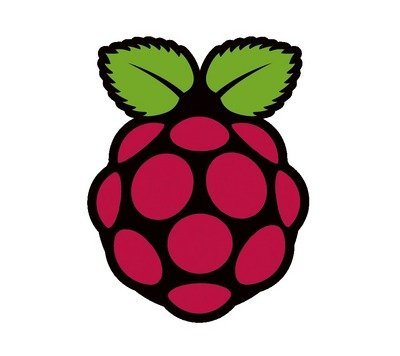Raspberry Pi — Is it good?
 Anyone with an ear for tech and gadget news will likely have heard about something called the Raspberry Pi. However, even after a little investigation, you may still be a little confused by what the Raspberry Pi is and what it isn’t.
Anyone with an ear for tech and gadget news will likely have heard about something called the Raspberry Pi. However, even after a little investigation, you may still be a little confused by what the Raspberry Pi is and what it isn’t.
“The Raspberry Pi is a credit-card sized computer that plugs into your TV and a keyboard,” according to the manufacturer’s web site. “It’s a capable little PC which can be used for many of the things that your desktop PC does, like spreadsheets, word-processing and games. It also plays high-definition video.”
When you hear that the Raspberry Pi is a computer that you can hold in one hand, you’re likely to picture an iPad or something of that nature. Then you actually SEE the Rasperry Pi — a naked computer board bristling with components and ports, without a single touchscreen, keyboard, or buttons in sight.
It’s not a typical consumer gadget at all, really. The Raspberry Pi Foundation simply wanted to provide a low-cost way to teach kids about computing — but you’d never know it from the massive interest that the device has caused in tech circles.
Let’s talk specs. The Raspberry Pi uses the Broadcom BCM2835 system-on-a-chip (SoC), the same SoC that powers Roku’s latest line of streaming HD video set-top boxes.The BCM2835 is made up of a 700Mhz ARM1176JZFS (which is found on many devices, including the iPhone 3G) and a VideoCore IV Multimedia Processor.
This VideoCore GPU is one of the more mouth-watering items on the Raspberry Pi. The VideoCore II was used in the iPod Classic, the III in Nokia’s 2010 flagship N8 smartphone, and the Raspberry Pi uses an even more powerful fourth-generation version capable of 1080p and BluRay-quality playback.
The GPU enables considerable gaming and general-purpose graphics as well, via Open GL ES 2.0 and hardware-accelerated OpenVG. The Raspberry Pi site claims that the “graphics capabilities are roughly equivalent to Xbox 1 level of performance. Overall real world performance is something like a 300MHz Pentium 2, only with much, much swankier graphics.”
Outputs include composite video (PAL & NTSC), HDMI, and a standard 3.5mm headphone jack. 256MB of on-chip SDRAM is shared between the CPU and GPU (and is not expandable). There’s no built-in storage, but the Raspberry Pi has a card slot which supports standard SD cards, as well as MMC and even SD I/O cards, and USB-format storage will also work just fine. Power is 5V, provided by a micro-USB jack; power supplies are optional, and the company assures us that 4 AA batteries will provide plenty of juice.
Operating systems and programming language. Any ARM-compatible Linux distro and ARM-6 language should work (and there’s been some speculation about a project to get Android working on the system), but the Raspberry Pi developers are focusing on Fedora and Python. The OS will not be pre-installed, but will be booted via SD chip — either one you download yourself, or as an optionally purchased product from the manufacturer.
Versions and pricing. There are a few small differences between the Model A and a Model B.
The Model A is $25, offers a single USB port (and no Ethernet), and will go on sale sometime later this year
The Model B is $35, with two USB ports and a 10/100 Ethernet controller, and the company has been selling them since Feb 29. Initially, they’d planned to offer runs of 10,000 units at a time, but demand was so unprecedented that they’ve entered into far more accommodating manufacturing agreements.
But what can I DO with it? Well, the main goal has been education — teaching more about the ‘guts’ of programming and hardware, to supplement the more basic ‘computer user’ instruction taught at most schools.
However, there are a wide range of possibilities to take advantage of the low cost and small size — but powerful and flexible potential — of the Raspberry Pi. A number of DIY hobbyists have proposed plans for a “carputer”, a touchscreen-controlled installation that can provide entertainment center capabilities and / or monitoring of the car’s vitals. With a bit of know-how and a few additional attachments, a Pi can be made into a home theater device that can handle audio, video, and even web browsing — with a form factor that allows it to be attached directly and inconspicuously to an HDTV for an elegantly clean HTPC solution.
Other suggestions include making the Pi into a sensor-equipped weather station, an audio-equipped streaming radio station, or as the heart of ‘smart’ peripherals and devices to be connected to larger and more powerful systems (programmable video and imaging applications are a major area of interest — including acting as the “eyes” of AI and robotic projects).
In a way, you might call it the ‘anti-iPad’. The Raspberry Pi is definitely not for everyone; it’s a basis for your active technical creativity, rather than a consumer product that makes you into a more or less passive user of someone else’s ideas. There’s a conspicuous lack of big colorful buttons that do all the work for you, but your options are wide open — limited only by your willingness to get your hands dirty with programming and hardware tinkering (and by 256MB of SDRAM, of course).





